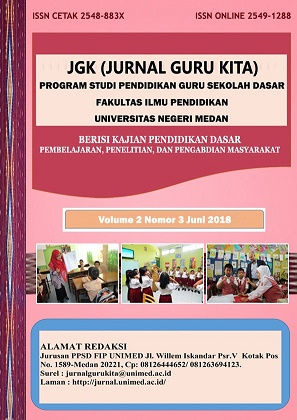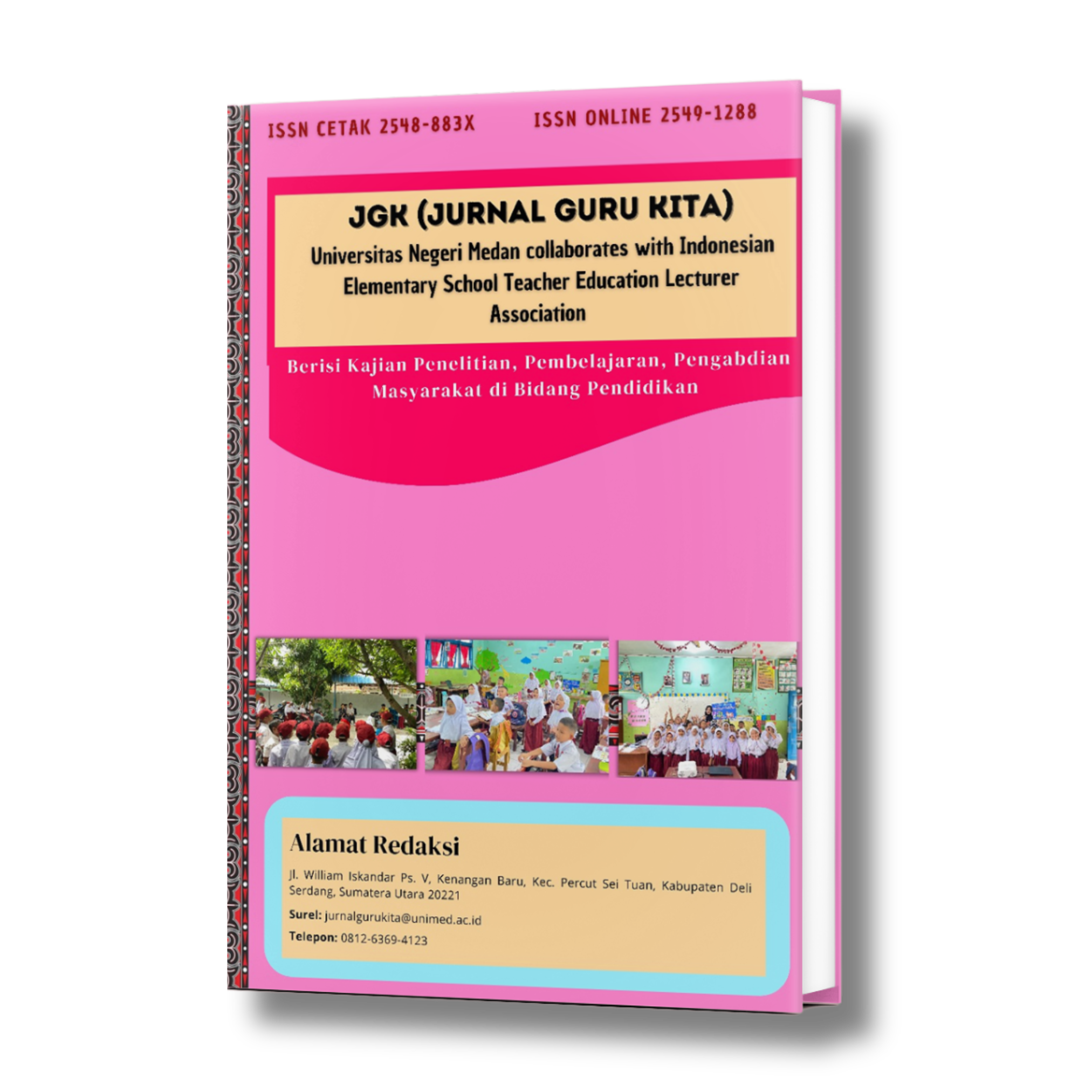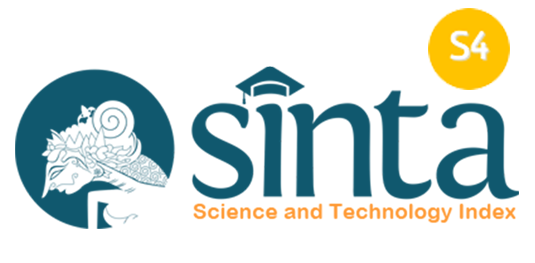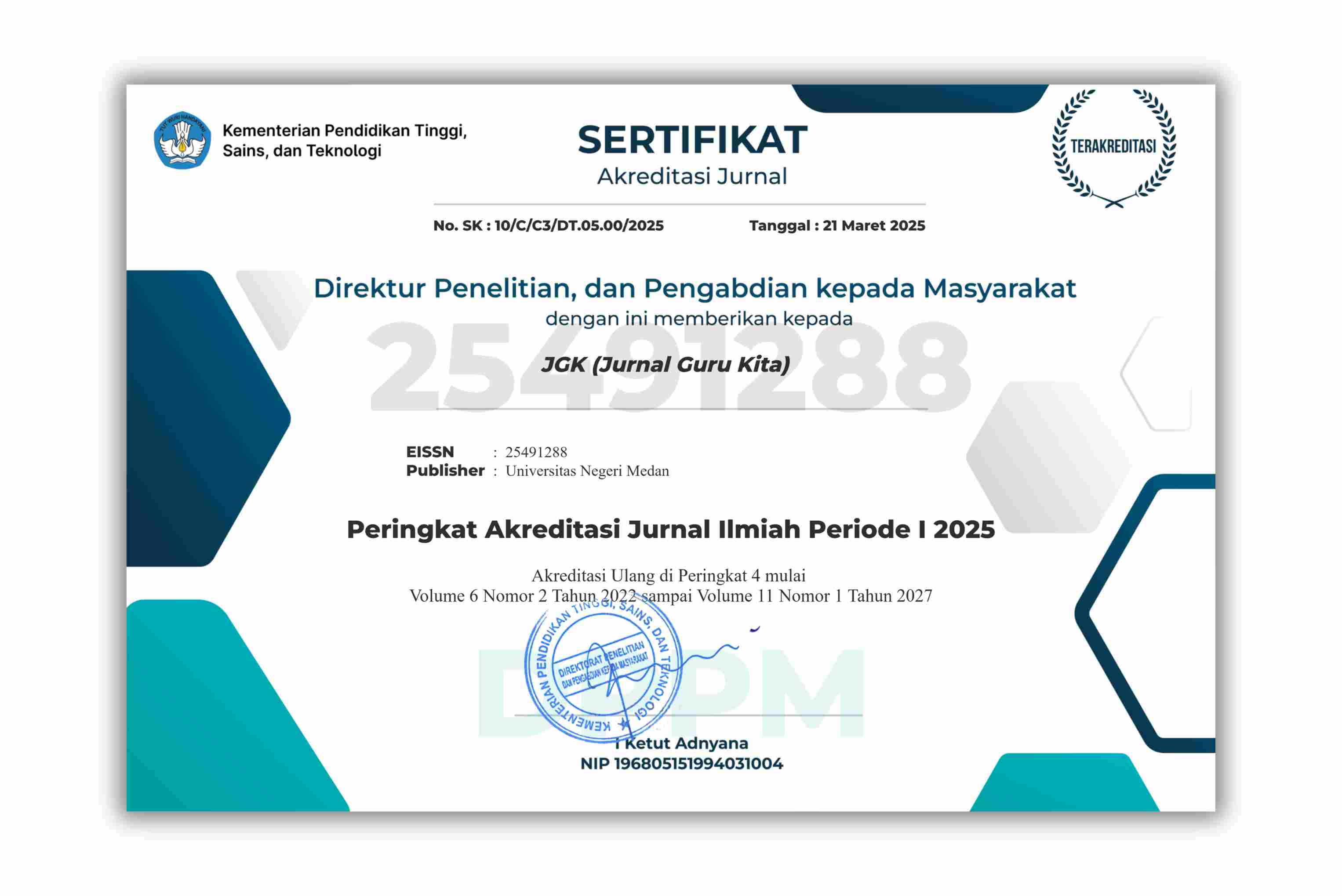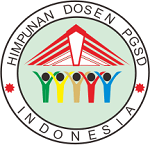IMPLEMENTASI MODEL ROLE PLAYING MENGGUNAKAN MEDIA WAYANG BERKARAKTER DALAM PEMBELAJARAN BERCERITA SISWA KELAS II SDN SAMBIROTO 01 SEMARANG
DOI:
https://doi.org/10.24114/jgk.v2i3.10391Abstract
Abstrak: Implementasi Model Role Playing Menggunakan Media WayangBerkarakter dalam Pembelajaran Bercerita Siswa Kelas II SDN Sambiroto O1Semarang. Jenis penelitian ini adalah eksperimen dengan menggunakan pendekatan kuantitafif. Populasi penelitian ini adalah seluruh siswa SDN Sambiroto 01 Semarang. Sampel yang diambil adalah 32 siswa kelas II yang menggunakan teknik Sampling Jenuh. Data dalam penelitian ini diperoleh melalui wawancara, dokumentasi, dan observasi.Hasil analisis uji-t diperoleh t-hitung = 12,12 t-tabel =1,696 pada taraf signifikan 5%, sehingga H0 ditolak dan Ha diterima. Dengan demikian, dapat disimpulkan bahwa model Role Playing efektif terhadap keterampilan bercerita siswa kelas II SDN Sambiroto 01 Semarang.Downloads
Published
2018-08-07
How to Cite
Kusumawati, N. N. I. (2018). IMPLEMENTASI MODEL ROLE PLAYING MENGGUNAKAN MEDIA WAYANG BERKARAKTER DALAM PEMBELAJARAN BERCERITA SISWA KELAS II SDN SAMBIROTO 01 SEMARANG. JGK (Jurnal Guru Kita), 2(3), 100–105. https://doi.org/10.24114/jgk.v2i3.10391
Issue
Section
Articles
License
Authors published with the JGK (Jurnal Guru Kita) agree to the following terms:
- Authors retain copyright and grant the journal the right of first publication with the work simultaneously licensed under a Creative Commons Attribution License (CC BY-SA 4.0) that allows others to share the work with an acknowledgment of the work's authorship and initial publication in this journal.
- Authors are able to enter into separate, additional contractual arrangements for the non-exclusive distribution of the journal's published version of the work (e.g., post it to an institutional repository or publish it in a book), with an acknowledgment of its initial publication in this journal.
- Authors are permitted and encouraged to post their work online (e.g., in institutional repositories or on their website) prior to and during the submission process, as it can lead to productive exchanges, as well as earlier and greater citation of published work. (See The Effect of Open Access)

